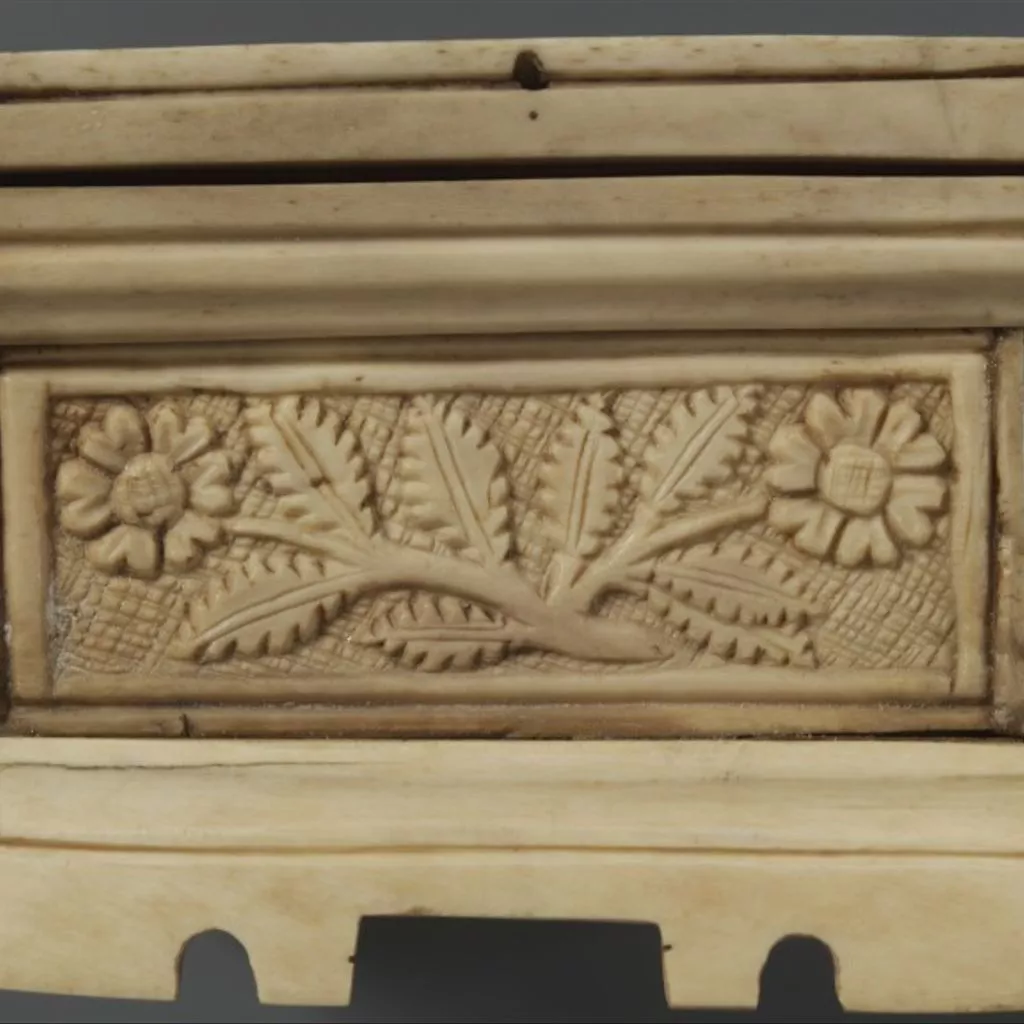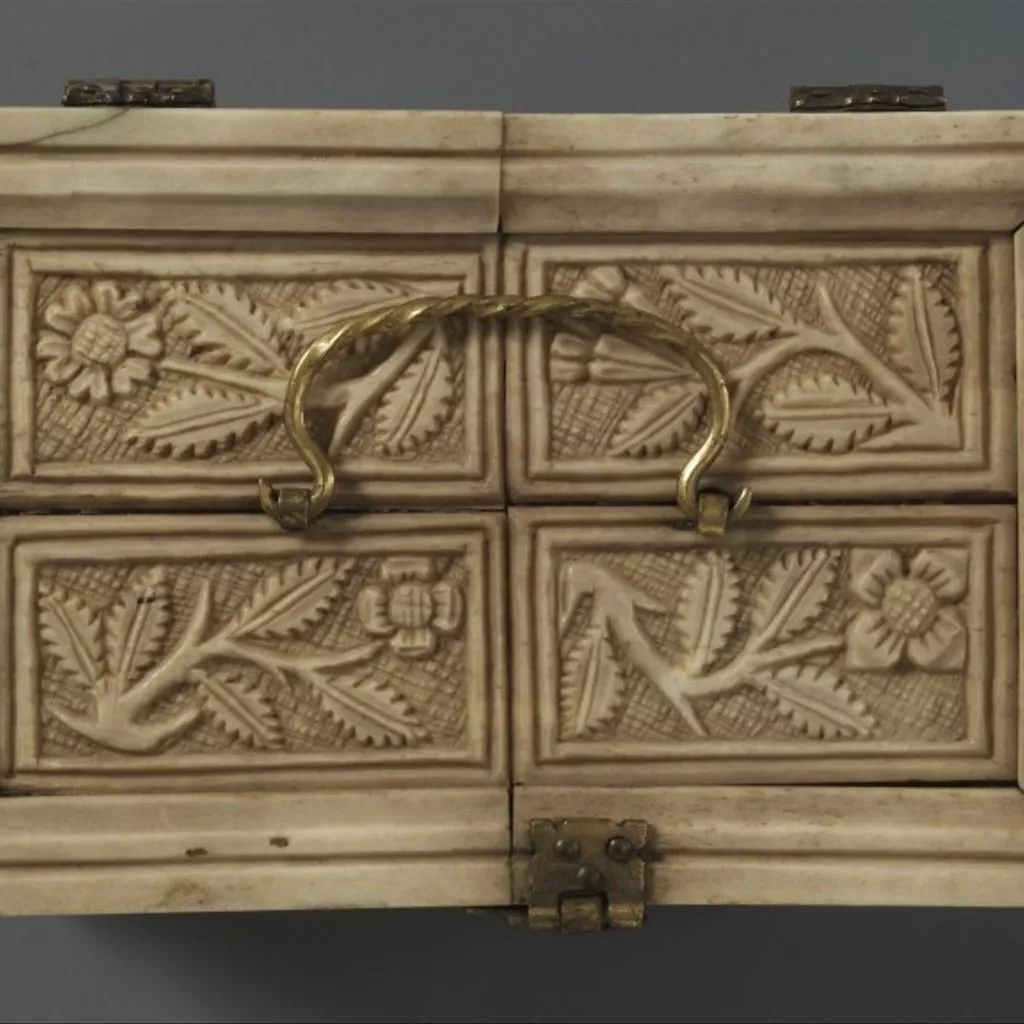Description
Casket in wood covered with plaques of bone, the lock and handle are in brass and do not appear to be medieval. The panels are filled with foliage and floral scrolls. The lid contains four bone plaques carved with flowers (probably roses) and a thistle against a hatched background, surrounded by a moulded border. Both the front and the back have two plaques, the short sides one; the former depict thistles, the latter roses. Lined with modern red silk.
Casket, bone, ivory, wood and brass mounts, with flower carvings, South Netherlands, ca. 1440-1470 with later additions
This casket of ivory, bone and wood, is made in the South Netherlands, in about 1440-1470, with later additions. It depicts floral motives and was porbalby intended as a nuptial gift. There are signs that the casket has been substantially restored, even remade.
From about 1320 onwards, ivory caskets featuring secular subject matter began to be produced in substantial numbers, often sharing the imagery to be found on mirror backs. Some of the earlier examples are also some of the grandest, and must have been aimed at a wealthy clientele. The nature of the subject matter, which almost always concentrates on courtly love, chivalry and romance, indicates that the caskets were used for the exchange of courtship and wedding gifts. The most important type among the early caskets was what has become known as the ‘composite’ casket, illustrating more than one secular tale. This group of large and impressive caskets, of which at least eight examples survive, illustrate a variety of secular tales and themes. The primary function was not to stimulate memories of the viewers, but to delight and entertain.






































